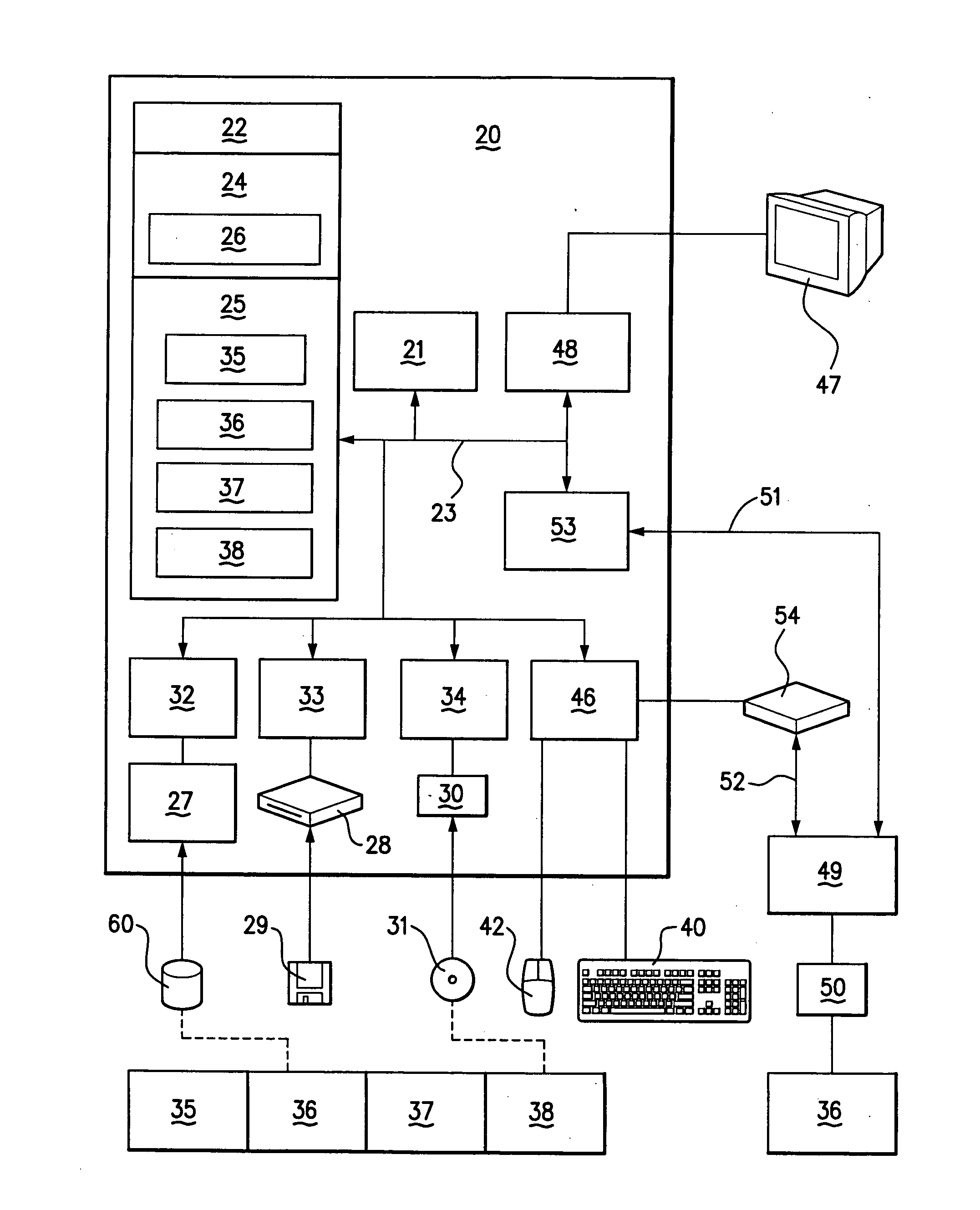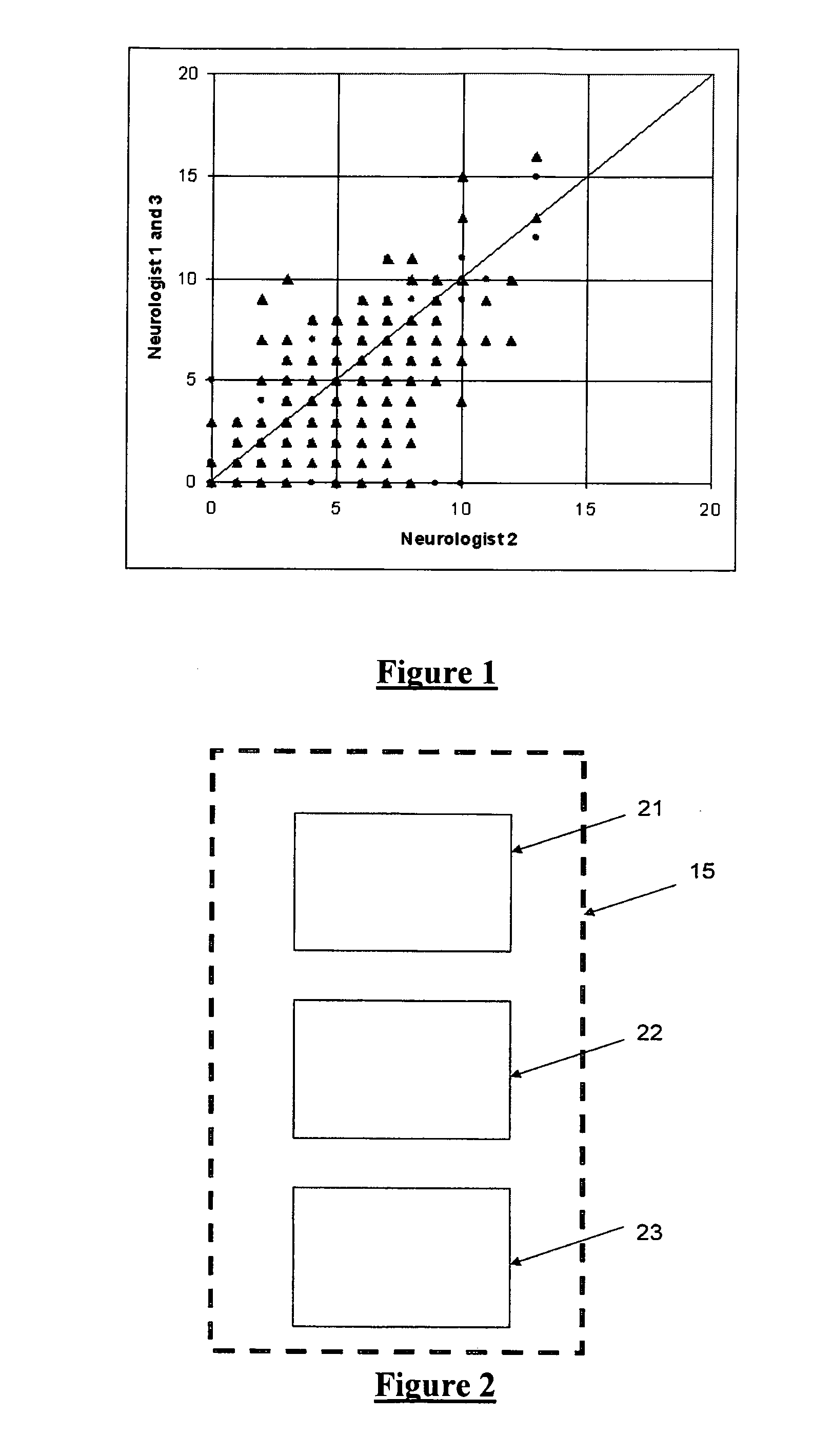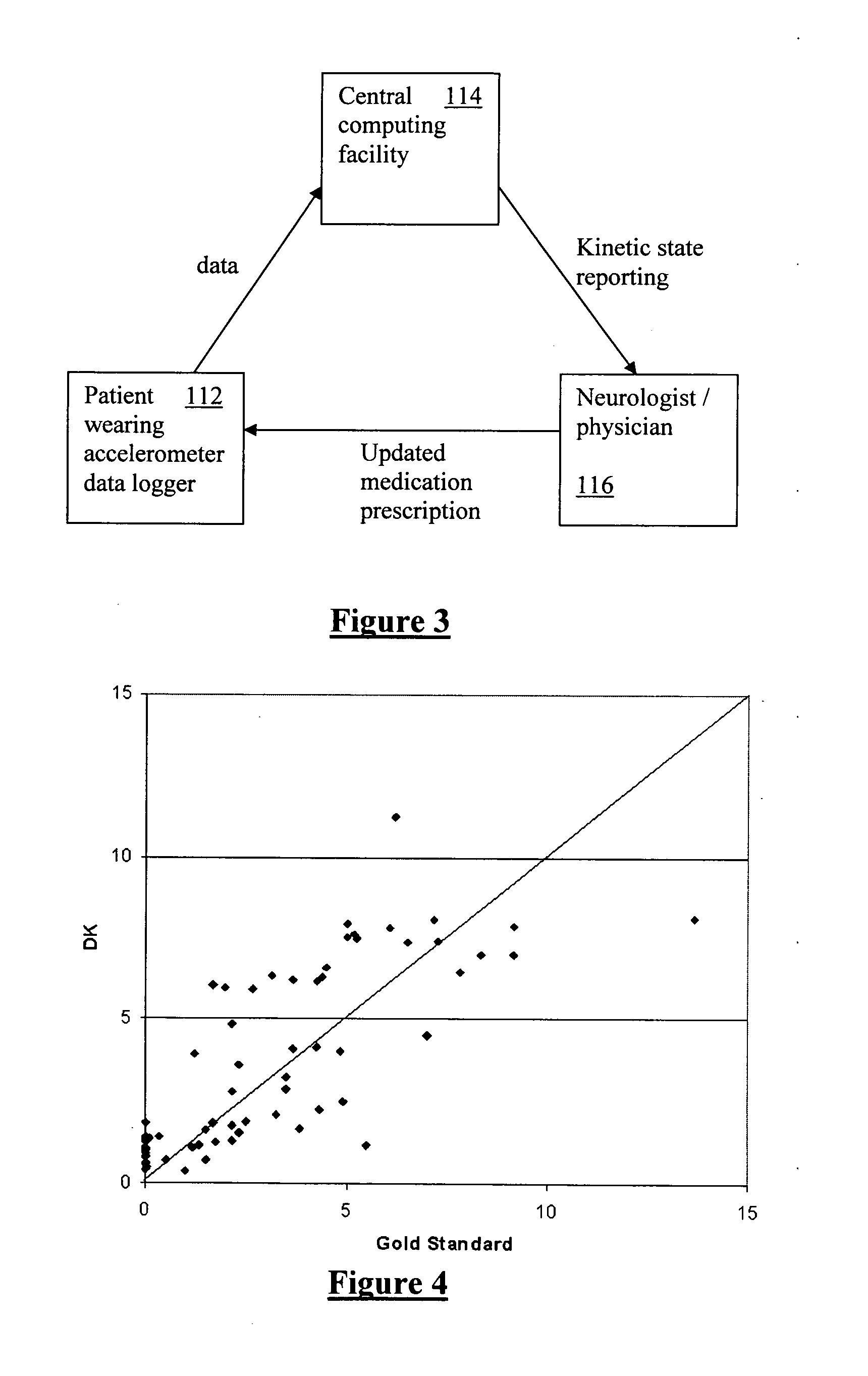Detection of hypokinetic and hyperkinetic states
a hyperkinetic state and detection technology, applied in the field of analysis of kinetic state, can solve the problems of difficult and complex dosage control, no objective measure to say whether a dose change was effective in improving symptoms, and difficult for physicians to avoid prescribing, so as to improve the effect of assessing the effect of therapeutic agents
- Summary
- Abstract
- Description
- Claims
- Application Information
AI Technical Summary
Benefits of technology
Problems solved by technology
Method used
Image
Examples
Embodiment Construction
[0071]FIG. 2 is a diagrammatic view of a device 15 for detection of various Parkinsonian or kinetic states in accordance with an embodiment of the invention. The device 15 is wrist mounted which the present inventors have recognised provides a sufficiently accurate representation of the kinetic state of the whole body. For example, IMS scores for a wrist compared to IMS scores for the whole body are shown in FIG. 13, illustrating that the wrist gives adequate kinetic state information. The device 15 comprises three elements for obtaining movement data of a limb of a person. The device 15 comprises a motion monitor 21 in the form of an accelerometer, an assessor 22 for recording and analysis of the received data in a manner that provides an objective determination of bradykinesia and dyskinesia, and an output means 23 for outputting objective determination of bradykinesia or dyskinesia over time periods so as to allow a clinician to prescribe medications or to allow the person to be...
PUM
 Login to View More
Login to View More Abstract
Description
Claims
Application Information
 Login to View More
Login to View More - R&D
- Intellectual Property
- Life Sciences
- Materials
- Tech Scout
- Unparalleled Data Quality
- Higher Quality Content
- 60% Fewer Hallucinations
Browse by: Latest US Patents, China's latest patents, Technical Efficacy Thesaurus, Application Domain, Technology Topic, Popular Technical Reports.
© 2025 PatSnap. All rights reserved.Legal|Privacy policy|Modern Slavery Act Transparency Statement|Sitemap|About US| Contact US: help@patsnap.com



